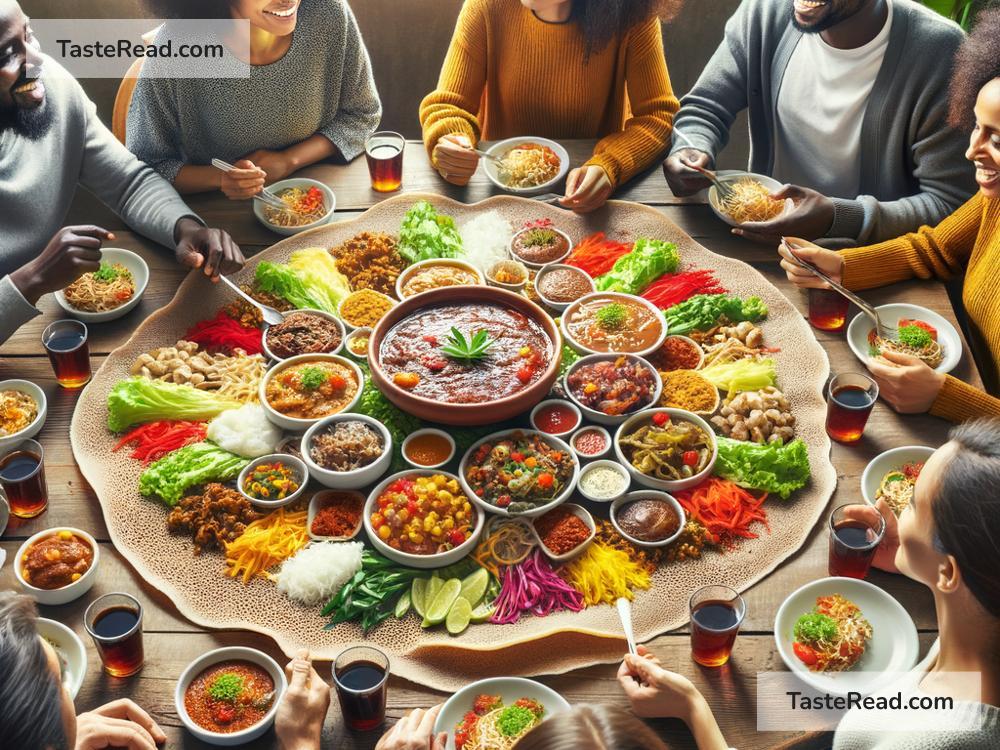The Significance of Ethiopian Injera in Communal Meals
Food is a universal language that connects people. In Ethiopia, injera is more than just a type of bread; it’s a cultural symbol that brings people together. Injera plays a central role in Ethiopian cuisine and is deeply tied to the idea of sharing and community. Let’s explore what makes injera so special and its importance in Ethiopian communal meals.
What Is Injera?
Injera is a soft, spongy, and slightly sour flatbread made from teff, a gluten-free grain native to Ethiopia. It looks like a large pancake and has a unique texture filled with tiny holes, which help it soak up flavors from stews and sauces. Injera is both food and utensil, as people use pieces of it to scoop up the dishes served alongside it. Meals featuring injera are not just about eating; they’re about bonding, sharing, and enjoying the experience together.
Injera and Ethiopian Cuisine
Injera serves as the foundation for almost all Ethiopian meals. It’s often spread out on a large communal platter and topped with a variety of flavorful dishes like doro wat (spicy chicken stew), misir wat (lentil stew), greens, chickpeas, and more. These dishes are colorful, aromatic, and perfectly seasoned, making the experience enjoyable from the first bite.
When you eat Ethiopian food, injera is always the centerpiece. Unlike other types of bread that accompany a meal, injera is integrated into how the food is served, eaten, and shared. It absorbs the rich sauces and spices, enhancing the flavors of the dishes.
Eating Together: A Communal Experience
One of the most distinctive aspects of Ethiopian meals is that they are communal. Large platters of injera and accompanying dishes are placed at the center, and everyone gathers around to eat together. Instead of using forks or spoons, diners tear off pieces of injera to scoop up the dishes. This shared method of eating brings people closer, emphasizing friendship and togetherness.
In Ethiopian culture, the act of sharing food isn’t just practical—it’s deeply symbolic. Eating from the same plate shows trust, love, and unity. It’s common for people to feed each other during the meal, which is seen as a sign of affection and care. This gesture, called “gursha,” is especially meaningful, as it strengthens bonds and reflects the importance of communal living.
A Reflection of Cultural Values
Injera and communal meals embody many of Ethiopia’s cultural values. Generosity, hospitality, and a sense of community are central to Ethiopian life. When guests visit a home, they are often invited to join in sharing food. This hospitality is expressed through the abundance of dishes served on the injera platter and the warmth with which hosts welcome others.
Even beyond the dining table, Ethiopian food culture teaches the importance of sharing and working together. Communities come together to prepare meals, from grinding teff to cooking stews. This collaboration highlights values such as teamwork and cooperation.
Injera: A Bridge Across Borders
Ethiopians living abroad often bring the tradition of injera with them, using it to connect with their roots and share their culture with others. Ethiopian restaurants around the world serve injera to introduce people to the nation’s unique and delicious food. Dining at an Ethiopian restaurant is always a communal experience, regardless of one’s background. Sharing a platter of injera allows people to immerse themselves in Ethiopian culture, even if just for a meal.
The Role of Injera in Celebrations
Injera is especially important during holidays, weddings, and other celebrations in Ethiopia. Special meals are prepared with added care, and the injera serves as the centerpiece. Events like the Ethiopian New Year (Enkutatash) and Meskel bring families and friends together to share festive meals. Injera never fails to bring people closer, giving moments of joy and connection even during life’s biggest occasions.
Why Injera Matters
Injera is more than food—it’s a reflection of Ethiopia’s heart and soul. Its role in communal meals highlights the value of sharing, strengthens relationships, and shows the importance of togetherness in Ethiopian culture. With every scoop and bite, injera reminds people that food isn’t just about nourishment; it’s about connection, love, and understanding.
Conclusion
Ethiopian injera is not just a bread; it’s a cultural treasure that plays a vital role in bringing people together. Whether it’s a simple family dinner, a gathering of friends, or a festive celebration, injera is always at the center of the meal—and the community. Its role in Ethiopian culture teaches us that food can be a powerful way to connect with others and build lasting bonds.
So, the next time you enjoy Ethiopian food with injera, take a moment to appreciate its deeper meaning. With each piece of injera you share, you’re participating in a tradition that has united people for generations. Isn’t it wonderful that something so simple can bring so much joy?


